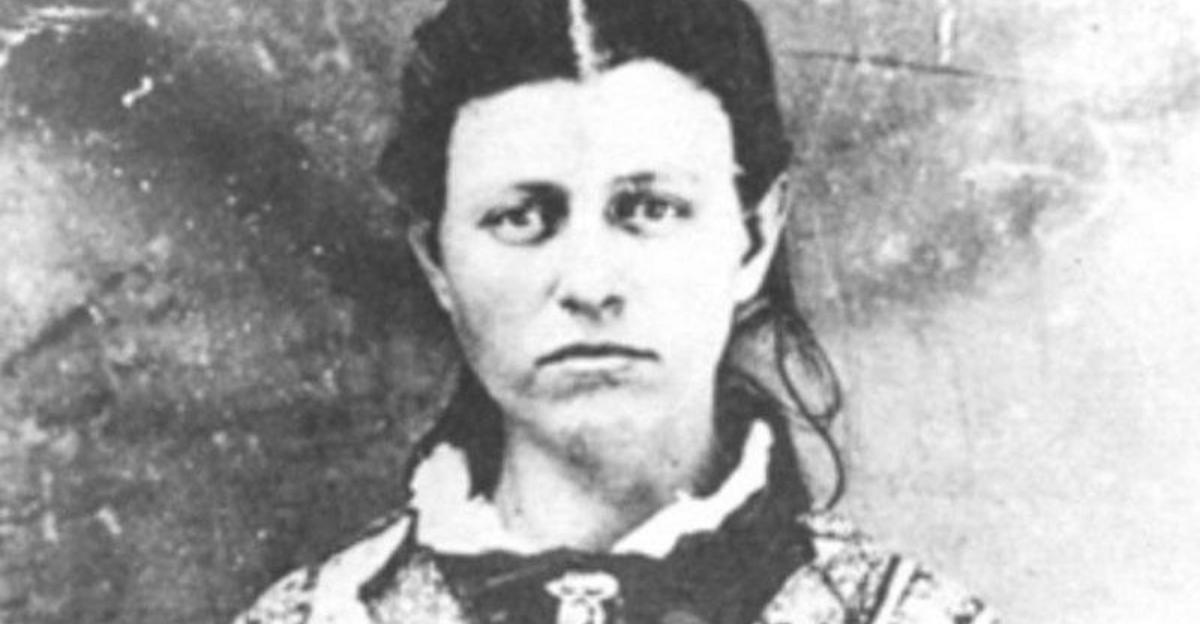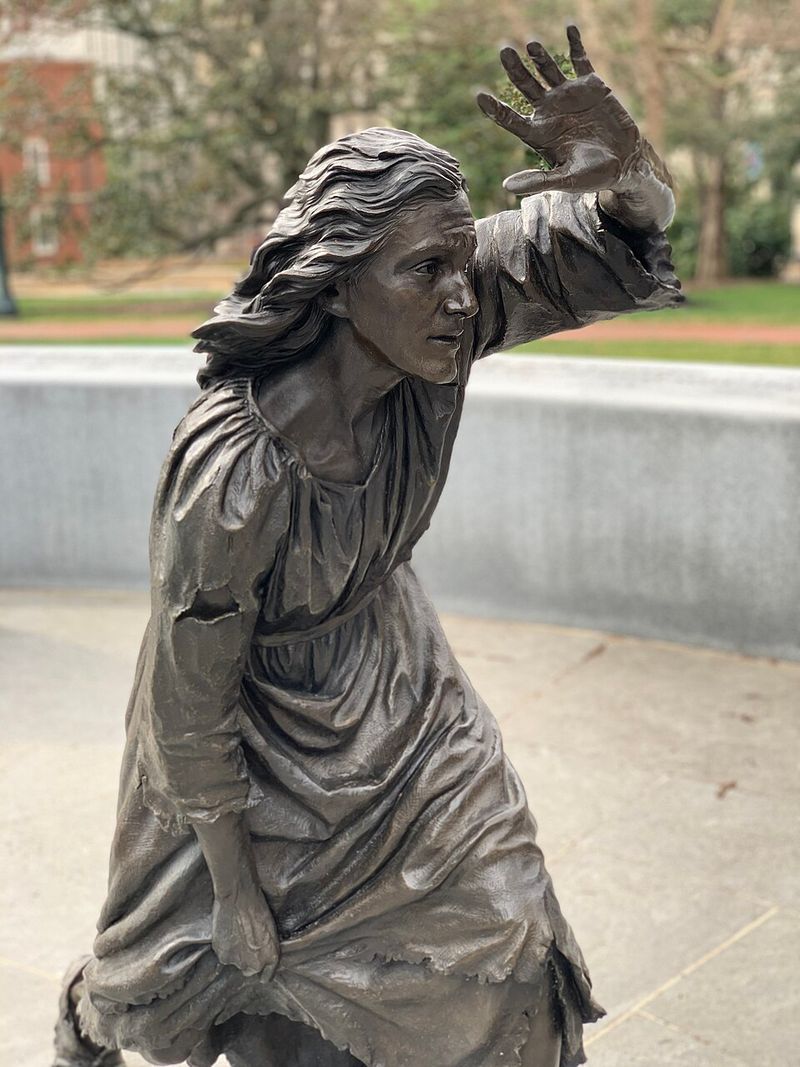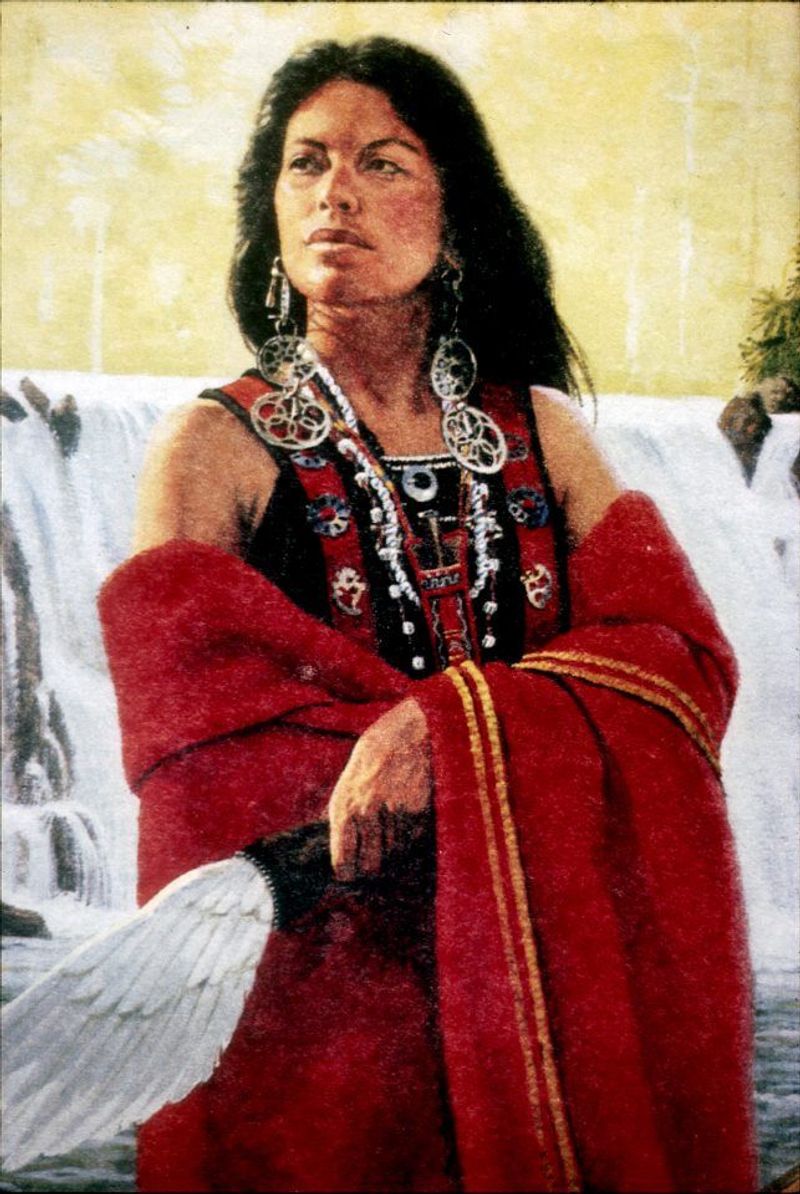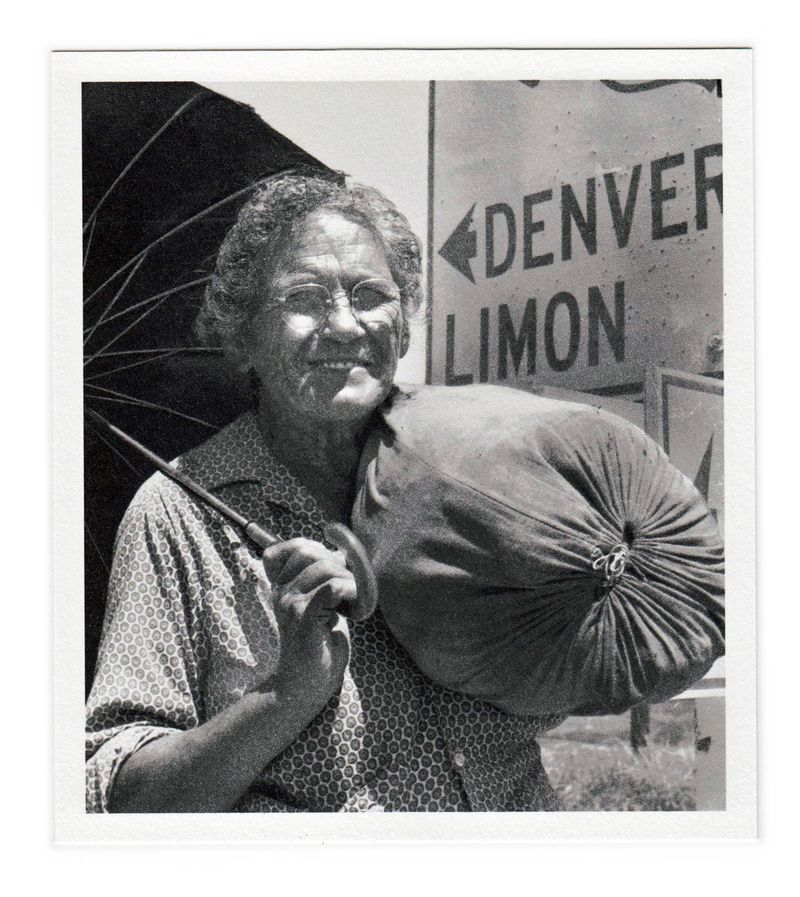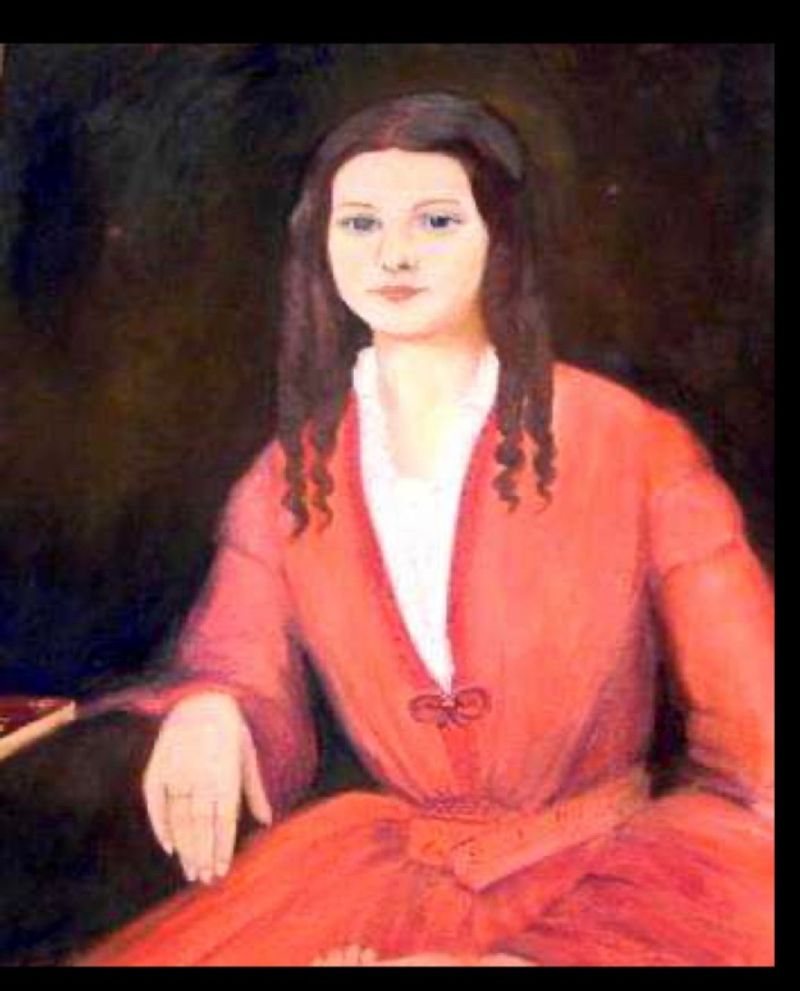Hidden in the misty hollows and rugged peaks of Appalachia are stories of women whose courage rivals any tall tale.
These mountain women faced impossible odds, from surviving wilderness kidnappings to challenging gender roles when doing so could mean death.
Their legacy lives on in the hills and valleys they once called home, reminding us that sometimes the most extraordinary heroes are the ones history tries to forget.
1. Mary Draper Ingles – The Woman Who Walked Home
Snatched from her frontier home during the bloody French and Indian War, Mary Draper Ingles refused to accept her fate. After months in captivity, she slipped away with an older Dutch woman and began a harrowing 500-mile journey home through untamed wilderness.
Without weapons, proper clothing, or supplies, Mary navigated by following rivers upstream. She survived by eating berries, nuts, and even tree bark. Winter was approaching, her clothes in tatters.
After 42 days of unimaginable hardship, Mary finally reached her settlement, barely recognizable to her own family. Her iron will to reunite with her children drove her through terrain that killed seasoned hunters.
2. Nancy Ward – The Warrior Who Chose Peace
Blood stained the battlefield when Nancy Ward first showed her extraordinary courage. After her husband fell fighting Creek warriors, she grabbed his rifle and led the Cherokee to victory, earning the title “Ghighua” (Beloved Woman).
Her political power was unprecedented. Ward sat in tribal councils, made decisions on war and peace, and held the power to spare captives. When tensions rose between settlers and Cherokee, she warned white settlements of impending attacks, saving countless lives.
Despite losing her own lands to white expansion, she advocated for peaceful coexistence until her death. Her mixed-blood descendants would form a bridge between two colliding worlds during America’s most turbulent formation years.
3. Dr. Mary Edwards Walker – The Doctor Who Wore Pants
Bullets whizzed overhead as Mary Edwards Walker performed surgery on wounded Union soldiers. The only female surgeon commissioned during the Civil War, she braved Confederate capture and imprisonment to save lives on the battlefield.
Her rebellion started long before the war. She graduated medical school when women weren’t supposed to have careers. She wore men’s clothing when such “cross-dressing” was illegal. Captured as a spy in 1864, she endured four months in a Confederate prison.
President Andrew Johnson awarded her the Medal of Honor—the only woman ever to receive it. When the government tried revoking it in 1917, she refused to return it, wearing it proudly until her death. She never compromised, not even for medals.
4. Harriet Simpson Arnow – The Truth-Teller of Hardship
From a one-room schoolhouse in the Kentucky hills emerged one of America’s most unflinching voices. Harriet Simpson Arnow captured the gut-wrenching reality of Appalachian women forced to leave their beloved mountains for industrial cities during wartime.
Her masterpiece, “The Dollmaker,” follows Gertie Nevels, a woman whose dreams of owning land shatter when her family relocates to Detroit. Critics recoiled at Arnow’s raw portrayal of poverty, discrimination, and the destruction of mountain culture. She refused to romanticize or stereotype her people.
While male authors of her era gained fame writing about Appalachia, Arnow struggled for recognition. Her unflinching portrait of women’s invisible labor—both physical and emotional—remains one of literature’s most honest depictions of rural-to-urban migration.
5. Emma Gatewood – The Grandma Who Outwalked Everyone
“I thought it would be a nice lark,” said 67-year-old Emma Gatewood when asked why she decided to hike the entire 2,050-mile Appalachian Trail. Escaping an abusive 30-year marriage with 11 children raised, she set off wearing Keds sneakers and carrying a homemade denim bag slung over one shoulder.
Rangers mistook her for a lost grandmother. Newspaper reporters couldn’t believe she had no tent or proper gear. Emma slept on piles of leaves, ate wild berries, and weathered hurricanes that forced younger hikers to quit.
After completing the trail in 1955, she hiked it twice more, becoming the first person to hike it multiple times. By her death at 85, she’d walked over 14,000 miles, proving age is just a number.
6. Sarah Knox Taylor Davis – The President’s Daughter Who Braved the Frontier
Born to wealth and privilege as the daughter of future president Zachary Taylor, Sarah Knox Taylor chose love over comfort. Against her father’s wishes, she married Jefferson Davis, future president of the Confederacy, and followed him to the Mississippi frontier.
Life on the edge of civilization tested her refined upbringing. She managed a plantation while Davis established their homestead, facing isolation and hardship with grace. Letters reveal her determined spirit despite the cultural shock of frontier life.
Tragically, just three months after their wedding, both Sarah and Jefferson contracted malaria. At only 21, Sarah succumbed to the disease, her brief life ending before her father’s presidency or her husband’s controversial leadership. Her courage to choose her own path, despite its difficulties, embodied the pioneer spirit.
7. Roseanna McCoy – The Woman Caught Between Feuding Families
The feud between the Hatfields and McCoys might be famous, but few know the woman at its heart. Roseanna McCoy fell hopelessly in love with Johnse Hatfield at a local election day gathering, igniting a forbidden romance that would pour gasoline on America’s most notorious family rivalry.
Defying her family, 18-year-old Roseanna fled to live with the Hatfields. When her father refused to allow marriage, the pregnant Roseanna found herself abandoned by Johnse, who quickly married her cousin. Heartbroken, she returned to her family in disgrace.
Their infant daughter died of measles, and Roseanna soon followed, dying at 28—some say of a broken heart. While portrayed as a lovestruck girl in folklore, the real Roseanna showed remarkable courage, challenging violent patriarchal clan loyalties.
8. Anne Royall – The Journalist Who Interviewed a President in His Bath
Widowed and left penniless at 54, Anne Royall reinvented herself as America’s first professional female journalist. When Congress canceled her husband’s Revolutionary War pension, she grabbed her pen and fought back, exposing corruption that targeted war widows like herself.
Her investigative methods were legendary. When President John Quincy Adams refused an interview, she tracked him to his daily Potomac River swim, sat on his clothes, and refused to move until he answered her questions. Her resulting articles pulled no punches.
Powerful men tried silencing her, even charging her as a “common scold”—a crime punishable by ducking stool drowning. Anne laughed in court, launched her own newspaper at 62, and continued exposing hypocrisy until her death at 85. Her fiery spirit never dimmed.
9. Hazel Dickens – The Coal Miner’s Daughter Who Sang Truth to Power
Her voice rang raw and powerful through union halls when women weren’t supposed to sing about politics. Born the eighth of eleven children to a poor West Virginia mining family, Hazel Dickens transformed the pain of watching her brother die of black lung disease into searing bluegrass ballads that became anthems for labor rights.
Male musicians dominated the bluegrass scene, but Hazel refused to soften her lyrics or her distinctive mountain singing style. Her songs like “Black Lung” and “They’ll Never Keep Us Down” became rallying cries during mining strikes throughout Appalachia.
Living in a Baltimore tenement, she worked factory jobs by day and performed by night, sending money home to her family. Her music gave voice to invisible women workers when the feminist movement often overlooked working-class struggles.
